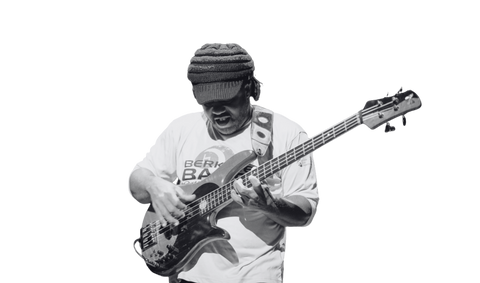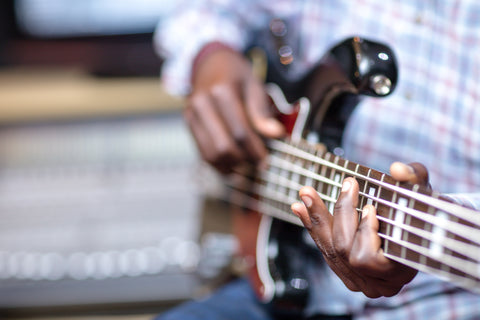
Bass Guitar Techniques
The bass guitar plays an important part in any band, providing the foundation that keeps the music grounded. Many aspiring bassists may overlook the techniques required to create effective basslines. Whether you’re just starting out or looking to enhance your skills, understanding key techniques can greatly improve your playing. In this blog, we’ll discuss fundamental bass guitar techniques that can help you become a more versatile player, including fingerstyle, slap and pop, harmonics, palm muting, and scales. Let’s explore how these techniques can benefit your playing.
"Touch, tone, and good taste are essential for a bassist."
- Yolanda Charles
Developing Fingerstyle Technique for Bass Guitar
Fingerstyle playing is a foundational technique that every bassist should focus on. By plucking the strings with your fingers, you can achieve a warm tone that fits various musical genres. Start by using your index and middle fingers in a steady alternating motion. Pay attention to accuracy as you begin slowly, gradually increasing your speed as you gain confidence. Experiment with different finger placements and dynamics to further develop your sound. Developing fingerstyle will build your technical skills and allow for greater expression in your basslines.
Exploring Slap and Pop Techniques for Bassists
The slap and pop technique is essential for adding energy to your playing, particularly in funk and rock music. This technique creates a percussive sound that can elevate your performance. To practice, slap the string with your thumb while pulling it with your fingers. Start with the lower strings, aiming for a clean sound, and then incorporate pops on the higher strings for added melody. Try out different rhythmic patterns to develop your unique style. Mastering slap and pop can bring excitement to your performances.
Harnessing Harmonics on the Bass Guitar
Harmonics can add an interesting layer to your sound, producing clear, bell-like tones. You create harmonics by lightly touching the string at specific fret positions while plucking. Begin with natural harmonics at the 5th, 7th, and 12th frets, making sure your fingers are barely touching the string to avoid muting the note. Once you’re comfortable, try incorporating harmonics into your solos or riffs. This technique can enhance your sound and allow you to express creativity in your playing.
Utilizing Palm Muting Techniques for Bass Players
Palm muting is another useful technique that can improve your bass lines. By resting the edge of your palm on the strings near the bridge while plucking, you achieve a muted sound that adds rhythmic quality. Start with basic basslines, focusing on how palm positioning affects the sound. This technique is especially effective in rock and metal, where a tight sound is preferred. As you become more comfortable, experiment with combining palm muting with other techniques for a more dynamic performance.
Incorporating Scales and Arpeggios for Bassists
Incorporating scales and arpeggios into your practice routine is essential for developing your overall musicianship. Mastering scales helps improve finger dexterity and deepens your understanding of music theory, which is important for improvisation. Start with major and minor scales, concentrating on smooth transitions. Once you’re comfortable, explore arpeggios to add complexity to your basslines. Regular practice of these techniques will build your confidence and help you create engaging basslines and solos.
Conclusion
Developing these bass guitar techniques will enhance your skills and contribute to your growth as a musician. By focusing on fingerstyle, slap and pop, harmonics, palm muting, and scales, you’ll expand your technical abilities and enrich your overall musical experience. Consistent practice is key—dedicate time to these techniques regularly and embrace the learning process. As you refine your skills, let your bass guitar become a valuable tool for adding depth to your performances. Keep practicing and enjoy the journey of musical improvement!







